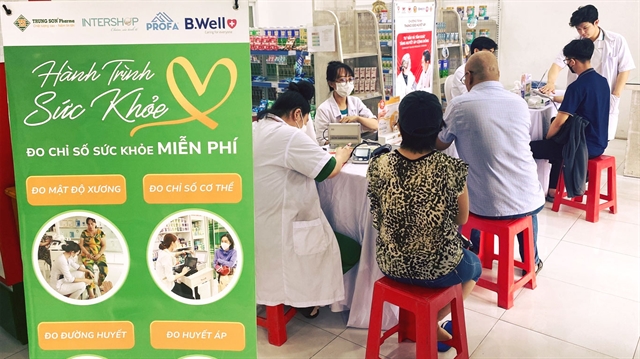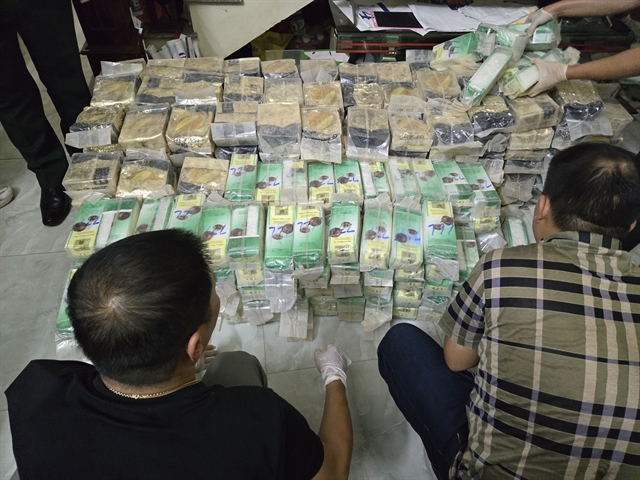 Society
Society
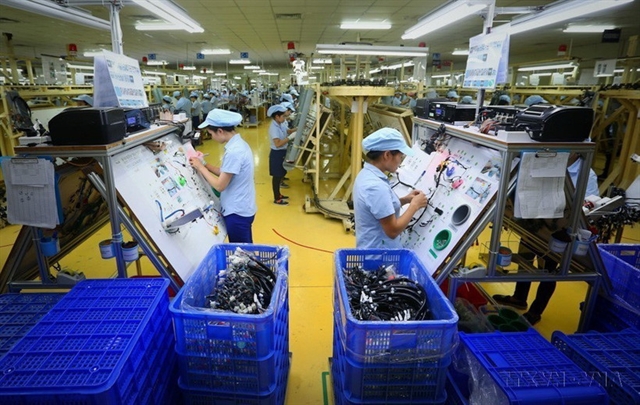
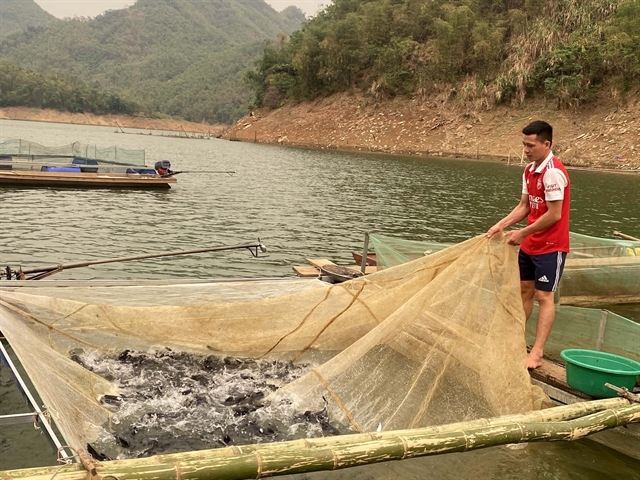 |
| Harvesting fish in Trung Sơn Hydro-power Reservoir in Quan Hóa District of Thanh Hóa Province. — VNA/VNS Photo Nguyễn Nam |
THANH HÓA — Many households in Thanh Hóa Province’s mountainous districts have successfully developed caged fish farming on hydroelectric reservoirs.
The caged-fish farming has helped the farmers earn hundreds of millions of đồng each year and escape from poverty.
One of the households most successfully raising cage fishes in the Trung Sơn Hydro-power reservoir in Quan Hóa District is Nguyễn Biên Cương's family in the Tà Bán ethnic hamlet of Trung Sơn Commune. They now have seven cages raising mainly carp and black lentils with a volume of about four tonnes of fish a year.
Thanks to applying advanced raising techniques, his family earns about VNĐ160 million (US$8,900) per year.
Cương said that when starting farming, his family faced many difficulties due to lacking raising techniques and choosing locations for cage placement, so in the rainy and flooding season, the cages were often stuck with garbage in the reservoir and drifted away.
With the assistance of the commune’s agricultural workers and staff of Trung Sơn Hydropower Plant, he moved the cages to a more reasonable position so that the fish grew well and were not affected by weather factors, Cương said.
Now cage fish farming has become his family's main and stable income source.
Like Cương’s family, finding the great potential of raising caged fish in the reservoir, the family of Đinh Công Chức in Tà Bán Hamlet also decided to invest in the farming model.
Instead of using bamboo to make cages, Chức boldly invested in cages with steel frames that are both firm and airy to help fish grow better.
With the advantage of clean water flows and feed such as bran, corn, banana leaves, sugarcane leaves and juvenile fish, fishes cultured in Trung Sơn Reservoir are highly appreciated for their quality.
As calculated, each household can earn VNĐ100 million per year on average, which helps many escape from poverty.
To help the fish farming households link together and have stable output, Trung Sơn Commune established Trung Sơn Veterans Aquaculture Service Co-operative with 15 members.
For people in need of investment capital, the commune cooperates with the Việt Bank for Social Policies in Quan Hóa District to provide a loan of VNĐ800 million.
At the same time, the district’s Department of Agriculture and Rural Development has organised training courses for the fish raisers on scientific and advanced technical applications, climate change response, techniques of using nets to make cages, and care and harvesting techniques.
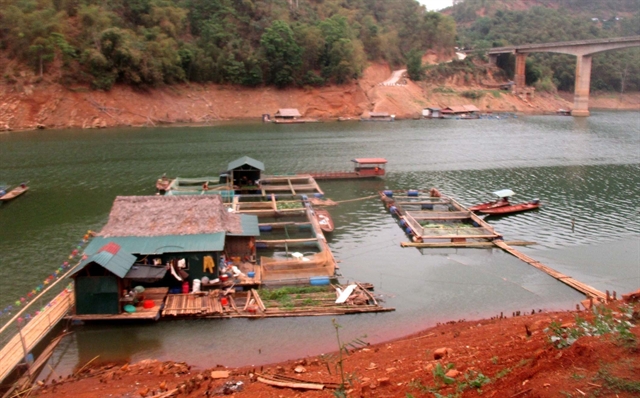 |
| A cage farming area on Mã River. — VNA/VNS Photo Nguyễn Nam |
Phạm Văn Cường, deputy director of the Trung Sơn Hydro-Power Company, said that the company creates all conditions for people to exploit the water surface of the reservoir to do caged fish farming and regularly informs people about the schedule of water discharge and storage as well as warnings during inter-reservoir operation, helping people to be proactive in the farming process.
Hà Thị Nga, head of the Agriculture and Rural Development Department, said that the model of caged fish farming in the hydro-power reservoir is a new direction of agricultural production of the local people in the mountainous district of Quan Hóa, contributing to hunger eradication and poverty reduction, and raising the annual income.
Currently, the district has nearly 50 households doing caged fish farming, with more than 100 cages on the Trung Sơn Reservoir.
The district plans to attract businesses and individuals to invest in breeding speciality fish with high economic values.
Also, the district will develop concentrated aquaculture areas to limit spontaneous farming, which is difficult to control and pollutes the environment.
Meanwhile, dozens of the locals in Điền Lư Commune of Bá Thước District have for many years used the water surface of Bá Thước Hydro-Power Plant 2’s reservoir to invest in commodity-oriented caged fish farming, thereby opening a new direction in local economic development.
In the commune, there are 74 households engaged in the farming model with hundreds of cages.
To increase productivity, the commune’s agriculture centre has organised several training courses providing the farmers with techniques for selecting fingerlings, stocking density, caring procedures and cage cleaning to ensure good water quality to help fish grow better and avoid diseases.
The commodity-oriented caged fish farming has become the main business that brings stable income for hundreds of households in the commune.
Nguyễn Văn Huy, chairman of Điền Lư Commune’s People’s Committee, said that fish farming in hydropower reservoir is a new production of the people in communes around the Bá Thước Hydro-power Plant.
In the future, the local authority will establish co-operatives to support people to borrow bank loans for expanding production scale, applying science and technology to farming, stabilising the output, and well-implementing safety measures, especially in the rainy season to reduce losses caused by natural disasters, Huy said.
However, replicating the cage farming model still faces many difficulties, such as investment capital and backward production practices leading to limitations in applying science and technology.
Therefore, it is necessary to have more attention from all authority levels and related agencies to create conditions for people to sustainably develop cage fish farming to bring high economic efficiency and contribute to hunger eradication and poverty reduction.
Hà Thị Lan Hương, vice president of the Farmers’ Association of Thanh Hóa Province, said that at present, the province has a total of 610 reservoirs and 11 hydro-power plants.
Irrigation and hydropower works create a large water surface area that is a favourable condition for the local people to develop aquaculture, Hương said.
The commodity fish farming is helping change the agricultural production ad rural economic structure and improve people's living standards, she said. — VNS
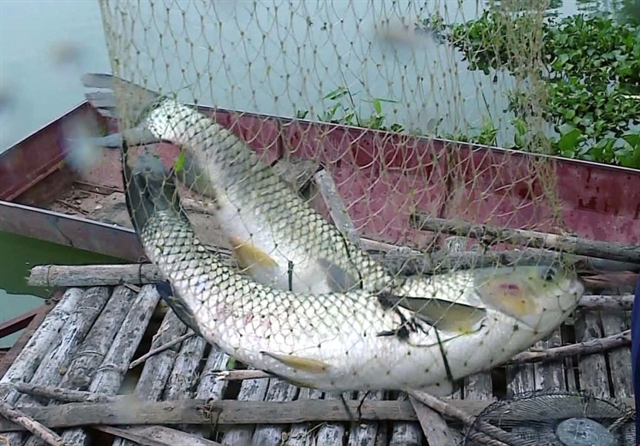 |
| Fish raised in the cage farm. — VNA/VNS Photo Nguyễn Nam |

